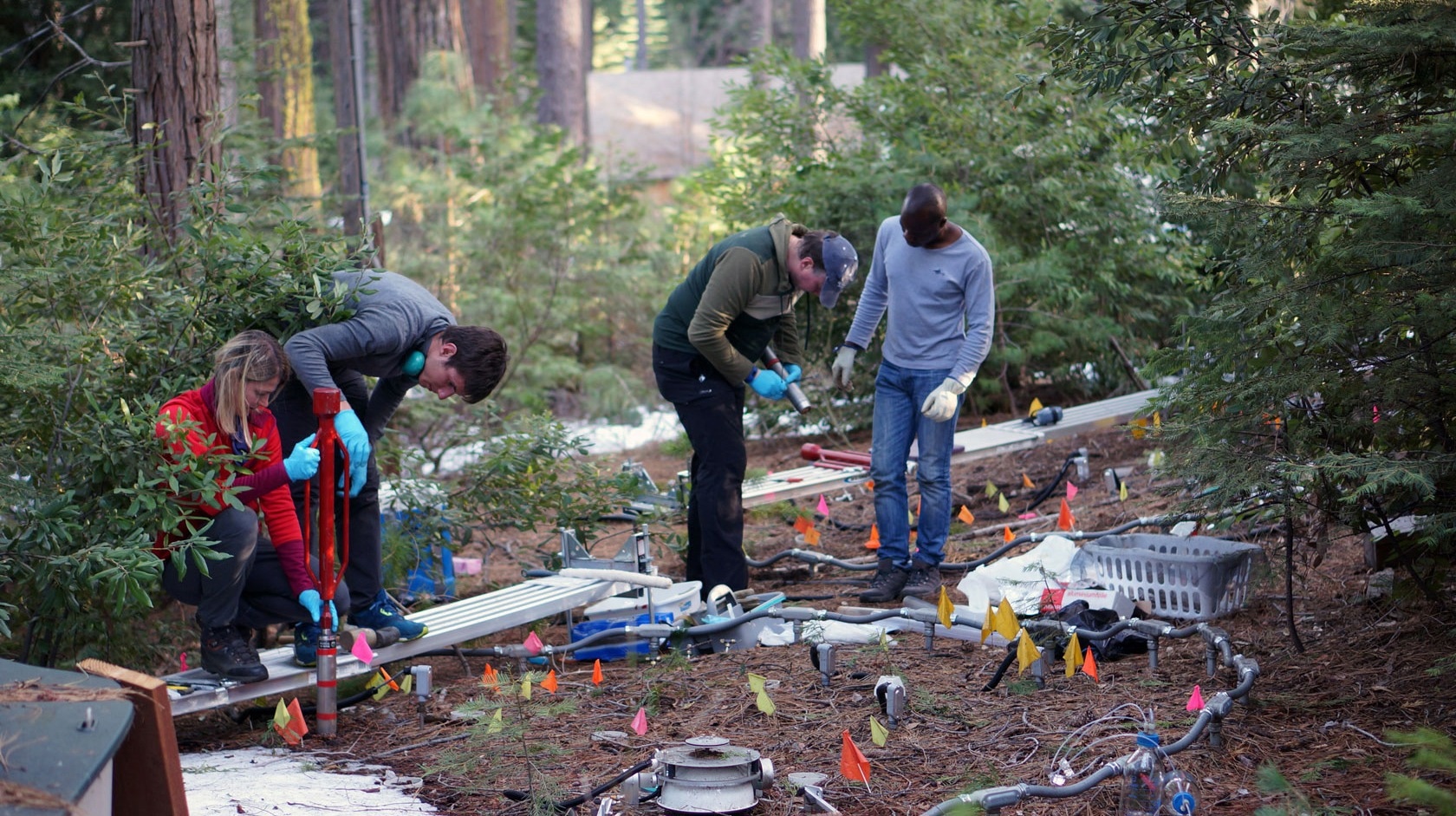Subsoils are the largest storehouses for carbon and one of the key sources of CO2 in the atmosphere. Research performed by scientists from the University of Zurich’s Department of Geography in the Sierra Nevada National Forest found that the decomposition of soil humus is accelerated by global warming.
 Researchers from the University of Zurich measure the soil’s carbon content in the Sierra Nevada National Forest. Image Credit: Michael W.I. Schmidt
Researchers from the University of Zurich measure the soil’s carbon content in the Sierra Nevada National Forest. Image Credit: Michael W.I. Schmidt
About one-fourth of the world’s carbon emissions are confiscated by grasslands, forests, and pasture land. Plants use photosynthesis to store carbon in the soil and their cell walls. Approximately 50% of carbon in soil is situated in the deeper layers, over 20 cm deep. However, owing to climate change, even such lower layers are warming up.
Loss of Vital Carbon Sinks
The warming climate is leading to considerable loss of the organic compounds that aid plants in storing carbon in their roots and leaves. Earlier, researchers had believed that complex polymers, with a more stable molecular structure, could endure natural decomposition for longer and therefore store carbon in the soil.
Nevertheless, the UZH-guided study has now demonstrated that the compound lignin, which offers stiffness to plants, was minimized by 17%, whereas waxy compounds known as suberin and cutin, which safeguard plants from pathogens and are seen in stems, leaves, and roots, were down 30%. Even pyrogenic carbon, the organic compound that stays after a forest fire, can be seen in considerably reduced amounts.
The experiments were performed in the forests of the Sierra Nevada in California. The 1-m deep soil was heated up artificially by 4 °C during those 4.5 years, after daily and seasonal cycles. In a business-as-usual climate scenario, this amount of warming is steady with projections through the end of the century.
Consequences for the Use of Soils to Tackle Global Warming
These results have significant importance for one of the main strategies in the combat against global warming, specifically depending on forests and soils as natural carbon sinks. Crop plants with specifically cork-rich biomass and deep roots are being developed as part of this strategy.
Until now it was assumed that this would keep CO2 locked in the ground. But our results show that all the constituents of soil humus will decrease at the same rate, simple chemical compounds and polymers alike. If these initial observations are confirmed in longer-term field experiments, the consequences are alarming. If the forest floor loses humus on a large scale and carbon is thus released as CO2, the pace of global warming will be accelerated even more. Our goal must be to stop emissions at the source.
Michael W. Schmidt, Study Last Author and Professor, Department of Geography, University of Zurich